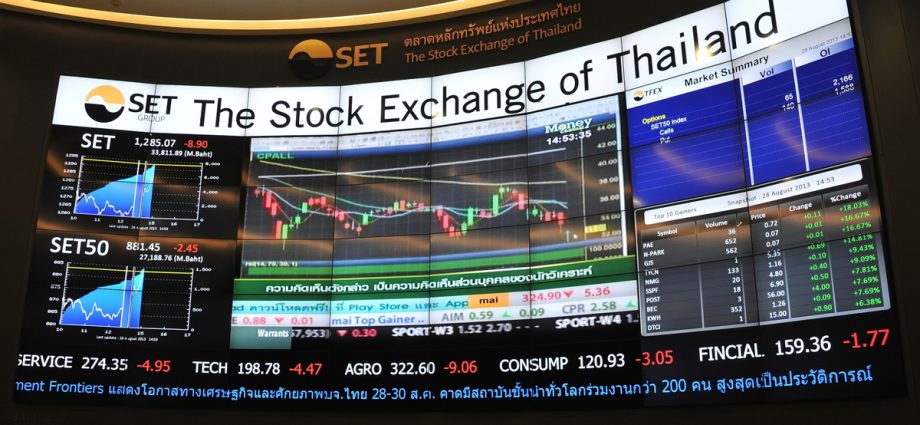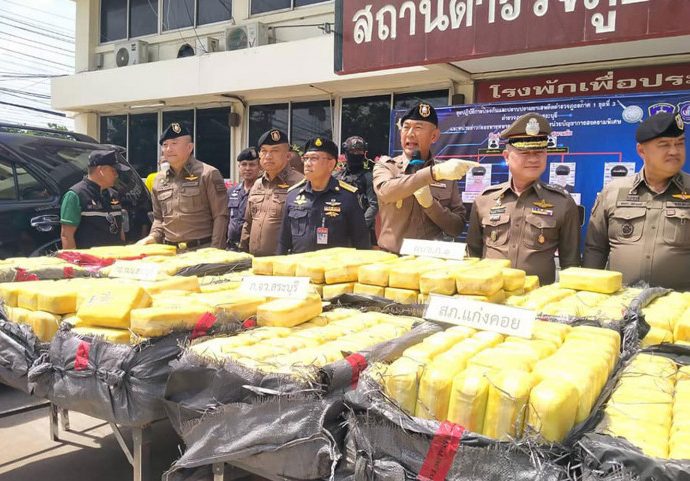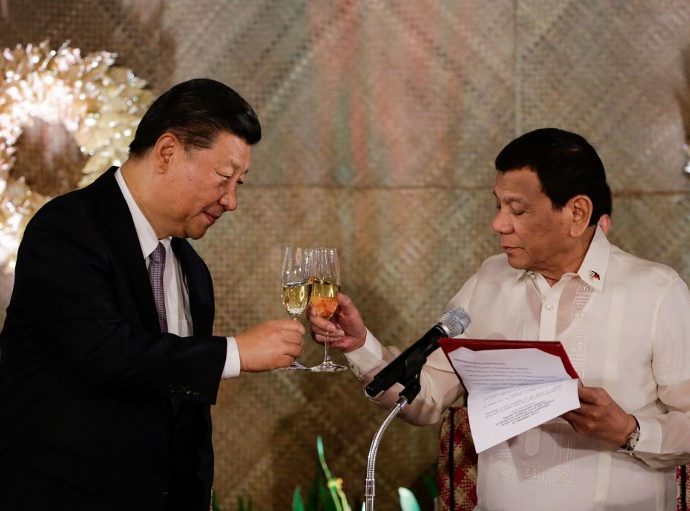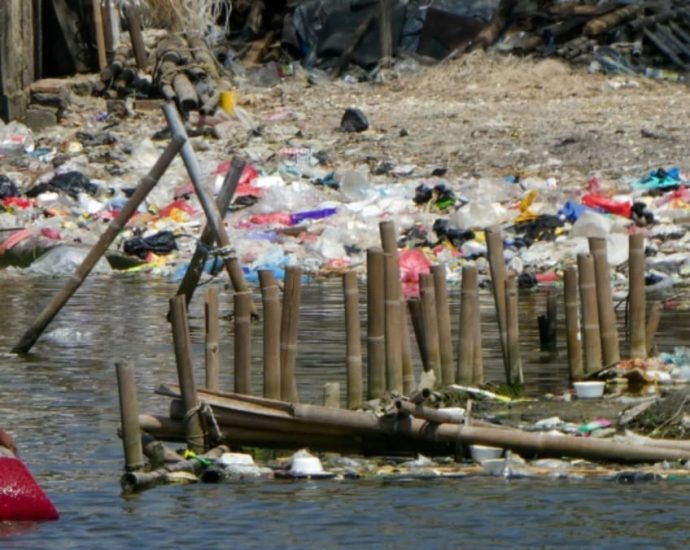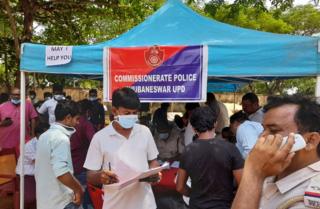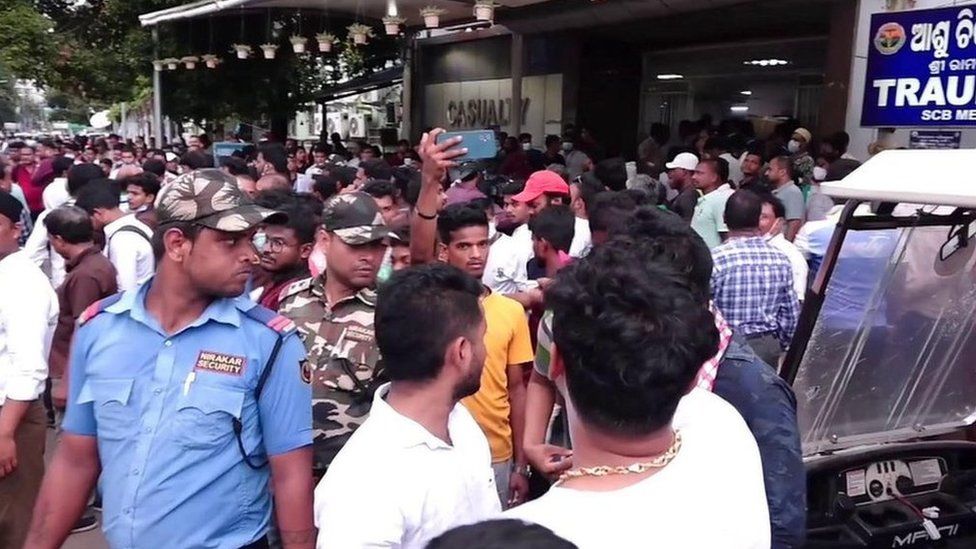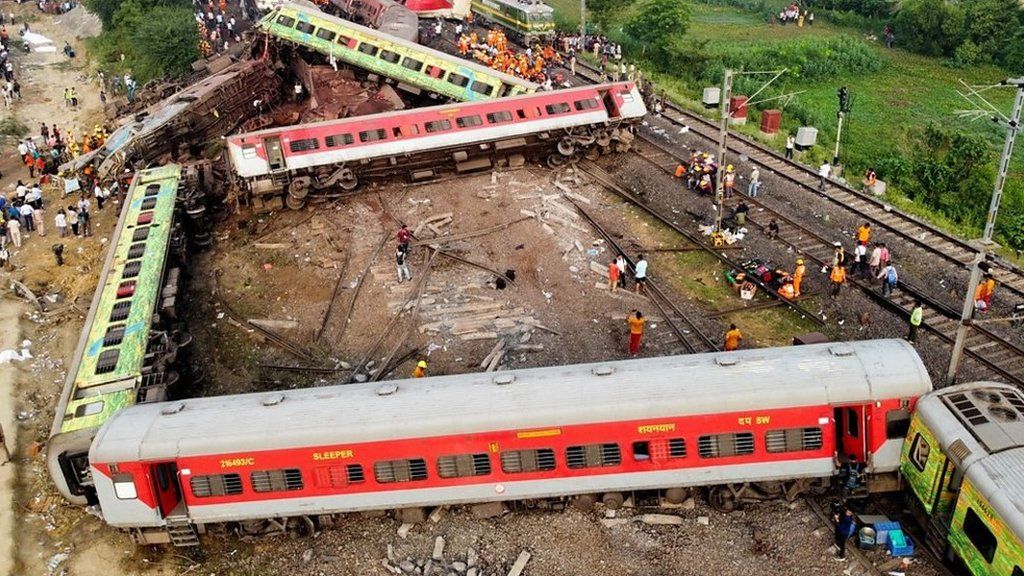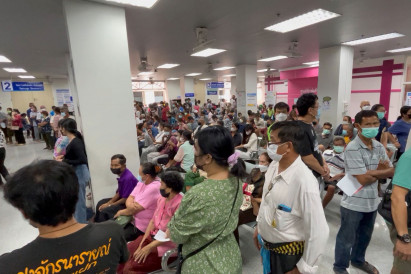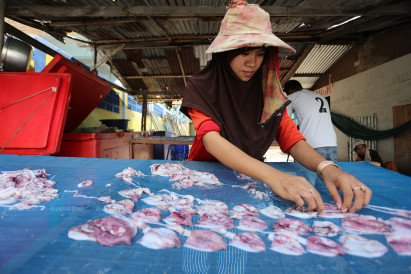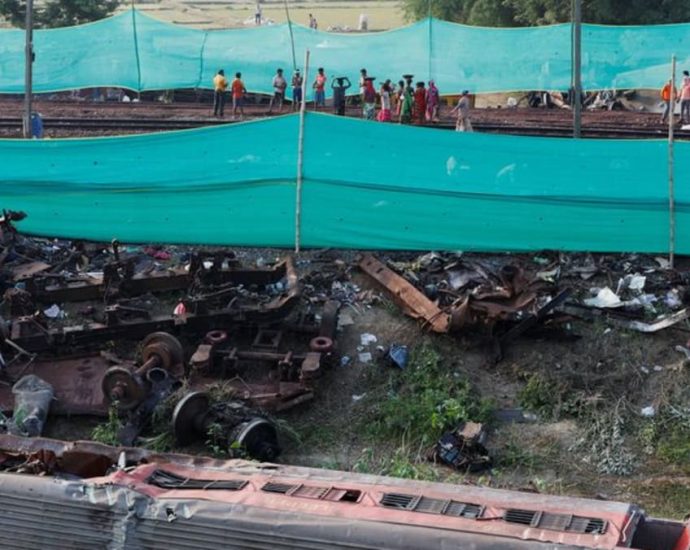Thai stock exchange completes infrastructure upgrade | stock exchange of thailand, set, nasdaq, technology, upgrade, infrastructure | FinanceAsia

On Wednesday (May 31) Nasdaq and the Stock Exchange of Thailand (SET) announced the launch of a new trading system that is set to provide improved function and efficiency across capital market dealflow and execution.
The upgraded infrastructure is built on Nasdaq-conceived technology that draws on state-of-the-art, in-built market data distribution and surveillance systems which support increasing transaction volumes and product varieties.
“Nasdaq has had a longstanding partnership with SET, having provided technology solutions to the exchange for over a decade. This announcement marks the successful completion of a technology upgrade programme that began in 2019,” Roland Chia, executive vice president and head of Marketplace Technology at Nasdaq, told FinanceAsia.
“It facilitates efficient system integration with widely adopted interfaces based on global standards for order entry and market data, including ITCH and OUCH.”
He shared that following the recent successful launch, SET has plans to integrate additional capabilities into its workflow, including Nasdaq’s Pre-Trade Risk Management, Index calculator, Data platform and other Market Surveillance solutions.
In the announcement, SET president Pakorn Peetathawatchai explained that the new system was inaugurated by the Thailand Futures Exchange last month and achieved a “smooth transition”. He reported particular success in terms of improved efficiency and faster order management.
In a video discussing the infrastructure upgrade, Thirapun Sanpakit, head of SET’s Information Technology division, highlighted the development’s capacity to “boost the competitiveness of the Thai capital market.”
“We believe the solution will enable our customers to achieve the fastest time to market. While also minimising total cost of ownership,” he said.
Sanpakit explained that the upgrade reduces roundtrip order latency to under 40 microseconds and said that it would support the bourse’s pursuit of new product launches. He detailed callable bull-bear contracts (CBBC) in the equity market, and single stock options in the Thailand Future Exchange (TFEX) derivatives market, as likely to go live in the near future.
The Thai bourse boasts the highest liquidity among Asean-based exchanges – a position it has maintained for over a decade. In 2022, capital raised through IPO totalled $3.46 billion, the highest volume among Asean exchanges and fourth largest in Asia after China, South Korea and India. According to Sanpakit, the exchange handles a daily trading volume of $2.5 billion.
SET was not able to comment beyond the press release prior to publication.
¬ Haymarket Media Limited. All rights reserved.
Chase leads to 5 arrests, 8m speed pills seized

Five alleged members of a major drug trafficking network have been arrested and 8 million methamphetamine pills worth about 50 million baht seized in Saraburi province.
The four Thai men and one Lao woman are members of the Jae Cake Sanam Chai drug trafficking network, according to Pol Lt Gen Jiraphat Phumjit, chief of Provincial Police Region 1.
He was briefing news reporters at Kaeng Khoi police station in Saraburi province on Tuesday.
The suspects were identified as Theerahong Phuphiewluang, 32, Phromphong Seelakan, 25, Saran Ketkaew, 23, Thawatchai Intharasongkhor, 66, and Lao national Kesone Misy, 31. They were caught in possession of 8 million meth pills worth about 50 million baht, Pol Lt Gen Jiraphat said.
The arrests were made following an investigation into the activities of a woman named only as Ms Jenjira, known as Cake, the leader of a major drug network, he said.
She had arranged for the transportation of smuggled drugs from a border area in the Northeast to buyers in the Central Plains and the South. (continues below)

Seventeen fertiliser sacks containing 8 million speed pills are found in a Toyota Fortuner on June 2.(Photo: Saraburi public relations office)
On June 2, police began a pursuit of two sport utility vehicles, a Toyota Fortuner and an Isuzu Mu-X, travelling along Chok Chai Road heading towards Lam Phra Phoeng intersection in Pak Thong Chai district of Nakon Ratchasima. The fleeing drivers turned off the highway onto a side road, temporarily evading them. The vehicles were later intercepted and five suspects arrested in Kaeng Khoi district of Saraburi.
The Fortuner was carrying 17 fertiliser sacks containing 4,000 packages with a total of 8 million meth pills. Mr Theerahong was the driver of the Fortuner. The four other suspects were on the Isuzu Mu-X, which travelled ahead as a lookout. Mr Saran drove this vehicle.
During questioning, the suspects allegedly confessed to being paid 40,000 baht each to deliver the drugs. They refused to name the person who hired them.
All were charged with collusion in possession of illicit drugs with intent to sell and handed over to Khaeng Khoi police for legal action, Pol Lt Gen Jiraphat said.
Why Marcos Jr is poking and not appeasing China
Despite careful words from Philippine officials, the latest US-Philippines Balikatan military exercise was a response to China’s increasing assertiveness in the South China Sea.
China’s provocations had become indiscriminate — targeting both uniformed Filipino personnel and small-scale fisherfolk in the Philippines’ exclusive economic zone. China’s aggressive actions had become bolder, making it more difficult to turn a blind eye to the situation.
The 38th Balikatan exercise in April 2023 was the biggest in the three-decade history of their joint combat drills. The exercise did not sit well with Beijing, which immediately released a warning that such activities can aggravate tension in the area.
The Chinese ambassador to the Philippines issued an upfront reproach to the Philippine government about China’s displeasure of such “provocative” activities.
The United States and the Philippines promptly conducted the third 2+2 Ministerial Dialogue on April 11, 2023, in Washington. Top US-Philippines foreign affairs and defense officials issued clear-cut statements about the South China Sea conflict.
The joint statement condemned China’s illegal activities and called for compliance with the 2016 Permanent Court of Arbitration decision, which rejected Beijing’s claims on territory and maritime rights based on its “nine-dash line.” The statement also reiterated the importance of maintaining peace and stability in the Taiwan Strait.
Under President Ferdinand Marcos Jr, the Philippines seems to have turned its back on the China appeasement strategy that characterized the foreign policy of his predecessor.
Former president Rodrigo Duterte moved the Philippines closer to China by downplaying the Arbitral Tribunal award favoring the Philippines. In retrospect, Duterte provided China with ample space to construct a closer and mutually beneficial relationship with the Philippines.

Yet Beijing continued to conduct aggressive actions in the Philippines’ exclusive economic zone targeting the Philippine military and fisherfolk who are more disadvantaged. There was a clear mismatch between Beijing’s words and actions.
It did not help that China reneged on many of its economic commitments to Manila. Beijing failed to fulfill its pledged investment in several big-ticket infrastructure projects.
As a dominant state that wields considerable influence in the economy and security of many countries, China seems to have assumed that vulnerable states, such as the Philippines, would tolerate its belligerent actions.
China had lost sight that the Philippines – like many ASEAN countries – is a post-colonial state, sensitive to the raw ambition of superpowers to dominate and bend them against their will. Beijing overlooked the determination of many domestic actors in these countries to defend their national interest.
The country’s territorial integrity is now under threat from a hegemonic China. Given the Philippine military’s inability to defend the country against a preponderant China, the Philippines moved closer to the United States, which provides the training and capacity to protect its territory.
The Philippines is also vital to US interests because it is a treaty ally that occupies a critical position in the US defense perimeter in Asia — the US alliance architecture which runs from East Asia to the South China Sea and the Western Pacific.
During their meeting on May 1, US President Joe Biden assured Marcos Jr that: “The United States remains ironclad in [its] commitment to the defense of the Philippines, including the South China Sea.”
A stronger Philippines–US alliance has complicated the cost for China to challenge the Philippines over territorial issues. Given the US military’s sophisticated weapons, equipment, and combat training, it is fully capable of deterring China’s advance in the South China Sea.
The enlarged presence of the US military in the northern Philippines can also reinforce more dynamic and collaborative operations in case China attempts to forcefully unify Taiwan with the mainland.
The way China treated the Philippines in the 2010s showed Beijing’s overconfidence as a new global power. During the term of former president Benigno Aquino Jr — when the Philippines filed a case against China in 2013 at the Hague — China refused to participate in the three-year trial.
Instead, Beijing continued to flex through military drills and issuing trade sanctions to the Philippines. Beijing lost a critical opportunity to prove that it respects the rule of law. During Duterte’s presidential term, Beijing wasted the chance to establish that it is a credible and benign great power to its neighbors.

Beijing left Manila with little choice but to take the next best approach, which was to strengthen its alliance with the United States to balance the China threat. This is not to say that the China-Philippines relationship is hopeless.
China can take the time to review its foreign policy and learn from the unexpected consequences of its actions. The strong-arm policy that Beijing used on Manila only aggravates tensions and has proven to be unsustainable in the context of great power competition for influence in Asia.
But Manila can take advantage of warmer US-Philippines ties to address critical issues beyond the security realm. The Philippines can join like-minded countries to address its vulnerabilities – including Chinese trade dependence and other economic security and resilience issues.
Jenny Balboa is a Lecturer at the Tokyo University of Foreign Studies and at the Department of Global and Interdisciplinary Studies, Hosei University. Shinji Takenaka is a Senior Economist at the Japan Center for Economic Research.
This article was originally published by East Asia Forum and is republished under a Creative Commons license.
Indonesia plans to ban single-use plastic by end of 2029
JAKARTA: Indonesia will start imposing a ban on single-use plastic products by the end of 2029, the country’s Environment and Forestry Minister Siti Nurbaya Bakar said on Monday (Jun 5). By that time, manufacturers are also mandated to reduce their use of plastic packaging by 30 per cent. Mdm SitiContinue Reading
Singapore swimmers claim three golds, break two meet records at ASEAN Para Games
SINGAPORE: Singapore’s swimmers struck gold three times on day three of the ASEAN Para Games in Phnom Penh, breaking two Games records in the process. This brought the country’s gold medal tally from the pool at the Morodok Techo National Stadium to seven. Colin Soon and Wong Zhi Wei gotContinue Reading
Odisha train accident: More than 80 bodies unidentified after India train crash
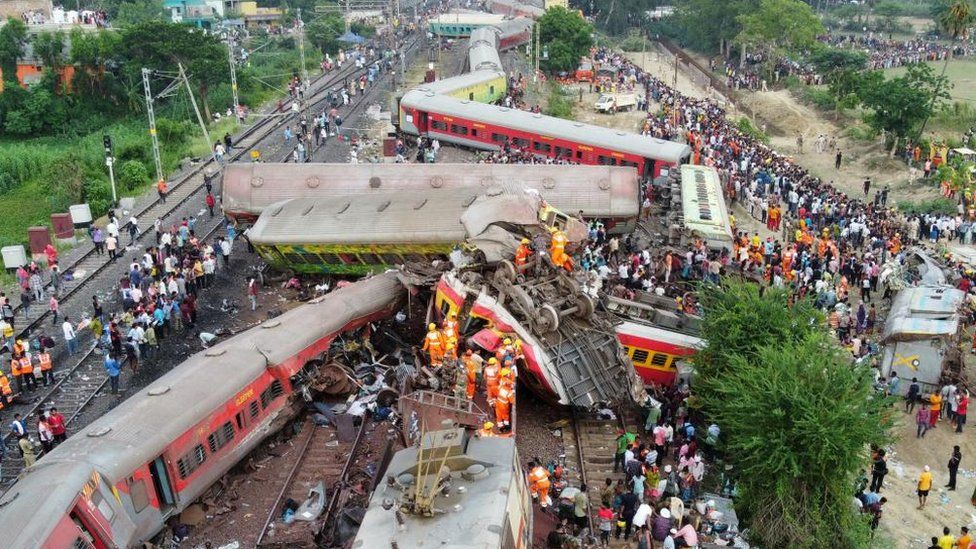 Reuters
ReutersFive days after a deadly three-train crash killed 288 people in India, more than 80 bodies remain unclaimed.
The crash on Friday evening in the state of Odisha involved two passenger trains and a stationary goods train.
More than 1,000 injured were taken to hospitals for treatment. Many families say they are still looking for loved ones.
The deadly collision is India’s worst rail accident this century.
On Tuesday, Odisha’s chief secretary Pradeep Jen said the official death toll rose to 288 from the previous figure of 275 while 83 bodies remained unidentified.
The crash saw a passenger train derail after wrongly entering into a loop track by the side of the main line and colliding with a stationary goods train that was parked there. Its derailed carriages then struck the rear coaches of a second passenger train going in the opposite direction.
More than 3,000 passengers are thought to have been travelling on the two trains, with reports saying both were packed.
Desperate family members of passengers from Odisha and other states have been crowding hospitals, seeking information about their loved ones. But in some cases, identifying the body is proving to be a real challenge.
At the Balasore District Hospital in Odisha, Muhammad Nizamuddin couldn’t claim his grandsons’ bodies.
Tafsir Ansari, 16 and his brother, Tausif, 13, were traveling by the Coromandel Express with their father when it met with an accident.
While the father is still missing, the photographs of the teenagers, along with those of several other victims, were projected onto a wall in the hospital – Tafsir tagged number 20 and Tausif 169 – for their family members to identify them.
The faces of the boys were disfigured due to injuries, but their grandfather says he recognised them.
So he decided to make his way to the state capital, Bhubaneshwar – where nearly 100 unclaimed bodies have been kept in four hospitals – but an official there stopped him.
The official informed him that Tafsir’s body had already been claimed by another family but is yet to be handed over to them.
“How is this possible? Do you mean that I won’t recognise my grandchildren,” a distraught Mr Nizamuddin told the BBC.
He has now been asked to get in touch with civic officials in Bhubaneshwar who have been tasked with checking claims, identification documents, and taking measures to see that the body goes to the right family.
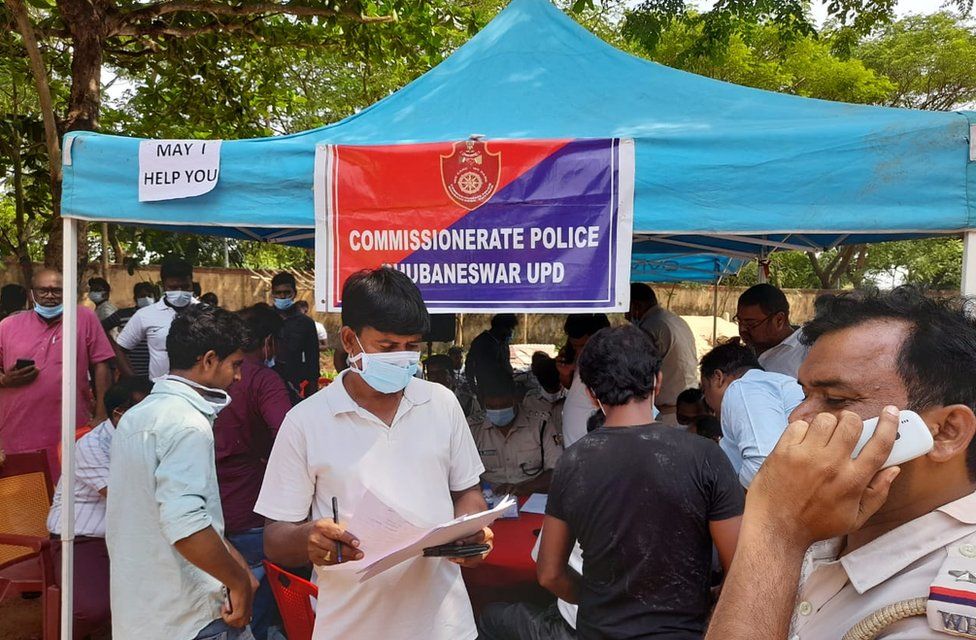

“If you go through the photo database, you’ll see many of the bodies are damaged beyond recognition. They are also now decomposing,” Bhubaneshwar Municipal Corporation Commissioner Vijay Amruta Kulange told the BBC.
In cases where there were more than one family have claimed a body, DNA testing was being done to help families with identification, he said, adding that “unidentified bodies would be kept at the hospital morgue for the next 10 days”, and that “the government would not hurry to cremate or bury” them.


At the weekend, Prime Minister Narendra Modi visited the crash scene and vowed that anyone found guilty would be “punished stringently”.
Rescue work was completed on Saturday and the tracks had been cleared of wreckage. Train traffic has already been restored on one of the lines and officials said the remaining lines would also be restored and reopened by Wednesday.
India has one of the largest train networks in the world. It runs more than 12,000 passenger trains daily, which are used by several billion passengers to travel across the country annually – but a lot of the railway infrastructure needs improving.
Trains are generally packed at this time of year, with a growing number of people travelling during school holidays.
The country’s worst train disaster was in 1981, when an overcrowded passenger train was blown off the tracks and into a river during a cyclone in Bihar state, killing about 800 people.
Additional reporting by Amitabh Bhattasali.
BBC News India is now on YouTube. Click here to subscribe and watch our documentaries, explainers and features.

Read more India stories from the BBC:

Shortage of doctors, nurses causing concern
Govt urged to raise staff ceilings, increase funding

A shortage of medical personnel, especially doctors, has led to staff being overworked at some hospitials and is a problem for the Public Health Ministry, a top health official said on Tuesday.
Dr Opas Karnkawinpong, the ministry’s permanent secretary, was responding to a news report that many new doctors were resigning shortly after entering government service because they were unable to withstand the heavy workload.
The report cited, as an example, actress Noppasorn “Puimek” Veerayuthawilai, who graduated from the faculty of medicine at Rangsit University.
She said in an interview that after six years of hard study she thought she would fulfil her dream of being a doctor. But after a short time in the job she resigned from the government health service.
Puimek said the system forced her to accept a heavy workload. It was too heavy, and she could not stay on. So she had resigned.
Dr Opas said it was true the health ministry suffered from a shortage of doctors and wanted to recruit more. However, the number it could recruit was decided by the Civil Service Commission and the government.
Dr Opas said people had a high need for public health services, particularly during and after the Covid-19 pandemic, but the ministry had only limited personnel.
He thanked the government for having approved 45,000 new positions for medical personnel to cope with the coronavirus outbreak. But more were still needed, he said.
Apart from the personnel shortage, there was a problem with the allocation of funds for the National Health Insurance Office, which had to provide universal healthcare coverage. More money was needed to cope with the growing number of people seeking its services.
All this was outside the ministry’s control, he said.
Dr Opas said the ministry had tried to make the best use of its limited resources and he thanked all medical personnel who had made sacrifices to best serve their patients.
Asked whether there could be a “brain drain” problem, Dr Opas said steps were being taken to prevent this. Knowing that the average income of medical personnel was below that offered by the private sector, the ministry had increased the overtime rate, built housing for staff and provided them with better welfare benefits.
Many government doctors had been promoted to C-9 level and nurses to C-8 and C-9 levels, he said.
The problem of overwork was the most difficult to solve, mainly due to the shortage of personnel. A bigger budget allocation and higher staff ceiling would help solve the problem.
Dr Opas said he had instructed all departments to make sure their personnel were provided with sufficient welfare and not given too heavy a workload.
Regional hospitals in cities had a bigger problem with overwork than smaller hospitals in districts.
On the issue of “brain drain”, Dr Opas said about 2,000 doctors resigned each year on average. Only about 10% did so to pursue further study. Most doctors who entered the public health system remain in the service, he said.
Cambodian PM falsely claims MFP would expel migrants
Cambodian leader stirs anxiety among countrymen ahead of election in which he is almost unopposed

Cambodian Prime Minister Hun Sen has falsely claimed that the election-winning Move Forward Party plans to expel Cambodian workers from Thailand.
The veteran strongman made the claim at a rally attended by 17,000 workers from an industrial park in Kandal province on Saturday, the Khmer Times reported.
He said any plan by Thailand to expel foreign migrant workers especially those from Cambodia, Laos and Myanmar — may have a dramatic impact not only on the three countries’ economy, but also on the Thai economy which relies heavily on foreign labour.
Hun Sen himself will also face the voters in national polls on July 23, albeit without any meaningful challengers since the Supreme Court dissolved the country’s only remaining major opposition party.
“Under the caretaker government, led by Gen Prayut Chan-o-cha, millions of illegal foreign workers have been granted legal status, but if they are expelled, there will be impact on the Thai economy,” Hun Sen said.
It is not clear how Hun Sen reached the conclusion that migrant workers were in danger of being forced to leave Thailand. However, one Thai administrative provision related to migrant workers was recently extended to ensure policy continuity during the period between the election and the formation of a new government.
None of the parties campaigning for the May 14 election in Thailand made any mention of policies to repatriate migrant labourers. In fact, the country’s recovering economy continues to face a labour shortage in sectors such as tourism and construction.
Successive governments have taken many steps to ensure a smoother path to legal migration and basic labour rights, working with neighbouring countries, for workers who want to come to Thailand.
Hun Sen also offered some unsolicited political advice to Move Forward, saying that the winning party should look further as “winning the election does not mean you become the Prime Minister. Up to 376 votes are needed to form a government, not just 151 votes”.
A group that helps Cambodian migrant workers in Thailand acknowledged that they were worried about their status as rumours had circulated that they would no longer be able to work in the country.
A small group of Thai people biased towards Cambodian workers have been spreading fake news, indicating that they have to return home immediately as Cambodian workers are no longer wanted in Thailand, said Ry Chay, first vice-president of The Charity Association of Cambodia.
“They distort the official information around, saying Thai authorities don’t need Cambodian and Laotian migrant workers anymore and spread it out across the country,” he told the Khmer Times.
“I get so many calls every day from Cambodian workers in Thailand who are concerned about the news, as they still want to work in Thailand. I explained to them by phone and on my Facebook page and now 60% of them have understood the information from Thai authorities.”
He said some confusion had arisen after Thai authorities informed employers that they no longer needed to register their quota of workers at the Department of Labour in Bangkok. They can now do it at the department offices in the province where their business is located.
“The Thai authorities now allow employers who need Cambodian and Laotian migrant workers to apply in their respective province, which is easier for them,” Ry Chay said.
The cabinet last week approved an extension to employment contracts that allows more than 200,000 migrant workers to keep their jobs.
The contract extension, under the terms of a broader memorandum of understanding that regulates migrant labour, will last only as long as the current government remains in its caretaker capacity.
The measure is subject to review once a new administration is formed.
According to Deputy Prime Minister Wissanu Krea-ngam, without the extension the migrant workers would have had to return home and wait until a new government took power before they could come back to resume their employment in Thailand.
A new lens on Southeast Asian street photography
If there’s one region in the world that has a lot of photographers, said publisher Suridh “Shaz” Das-Hassan, it’s Southeast Asia. With that, it’s no wonder that his latest venture is a photo journal of street photography from the region.
Though London-born and raised, Das-Hassan lived in Southeast Asia for 12 years, bouncing between Cambodia, Thailand and Indonesia. He eventually landed back in London where, along with two partners, Das-Hassan began a publishing house called Soi Books.
In Thai, the word soi means “side-street”. So it’s fitting that Soi Book’s most recent project is an upcoming, biannual journal named Plaza that will feature street photography spotlighting the everyday lives of people living throughout Southeast Asia. The arthouse-style images are in black-and-white, many with a high-grain, gritty style. The resulting frames are saturated with character, taking the focus from any individual person to a reflection of a familiar archetype, a memory or the shape of a feeling from a long time ago.

Coming from a background in film and documentary-making, Das-Hassan knows the power images hold. And with a life spent between the U.K. and Southeast Asia, he knows the talent that comes from this region and what its artists can capture through the medium of photography.
“I did a lot of migration documentaries, corruption films,” he said, reflecting on his own time in Southeast Asia. “It’s natural to marry those issues and these things, trying to see them through the prism of art, trying to basically talk about quite sensitive issues through the prism of art.”
From that, Das-Hassan believed a street-level approach to documenting life in the region was the way to go. Plaza features photographs of locals, taken by locals themselves.
“It’s very important to give an idea of Southeast Asia through the prism of people from Southeast Asia,” he said.
Ahead of the publication of Plaza’s first-ever issue, Southeast Asia Globe caught up with Das-Hassan to speak about the process behind starting the journal, Soi Books, and the publishing industry in Southeast Asia.
What is Plaza?
It’s a black-and-white Southeast Asian street photography journal. I think in a few releases, we might start changing it up and diversifying until its particular areas may concentrate on certain things. So it will probably end up being a series.
Why make a journal of photography from Southeast Asia?
I’m half-Indonesian and I was based in Southeast Asia for 12 years. I feel as a creative, and an artist, and a photographer, that the consistency of releases is what I always feel the region kind of needs.
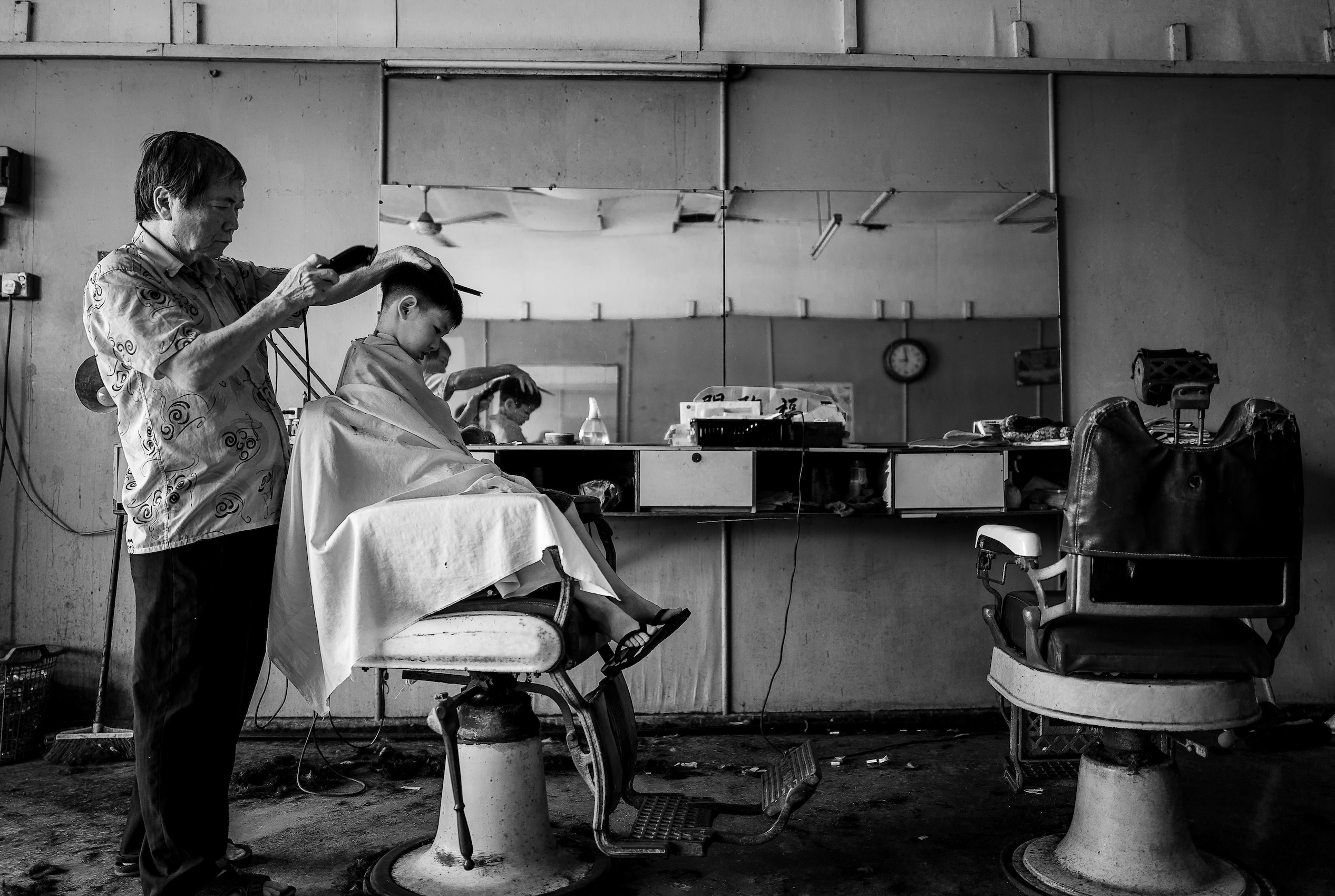
Where will Plaza be published from?
There’s three of us: myself in London, Ryo [Sanada], who is half-Japanese and based in Brussels, and Steve [Aston], who is based in Jakarta. We’ve worked together for many years. That way, we can cover the territories, the operations, and try to get our books to retailers specifically in Southeast Asia. It’s not the easiest getting books into shops there, as you can imagine.
I suppose we’re a remote publishing company and we have printers we work with everywhere, in China, Turkey, in the U.K. We have distribution places around the world.
How did Soi Books come together?
We all had a stint in advertising in Southeast Asia to some degree. Ryo and I ran a gallery in Bangkok for about a year. Then we opened a creative agency in Singapore for a few years. Steve worked in advertising in Singapore and then Indonesia for a long time.
The circle is quite small as an expat in Southeast Asia, you start to know, like, “Oh, these are the people in Bangkok, these are the people in Phnom Penh, in Jakarta”. We always wanted to work together as a trio and come back post-pandemic, not really wanting to work in brand-land.
We wanted to go back to something a little bit more like art and a little bit more dynamic. Now we get to do our books, illustration books, potentially kids’ books down the line. We also get to do more political stuff and more social stuff, that’s something that we’re looking at.
Why did you start the street photography initiative now?
We were always documentary filmmakers, but we fell into publishing as authors many years ago. We did books on graffiti in Asia.
We’ve done a lot of books for a lot of different publishers. And then over the years of running our own studio, running our own business and then with Covid-19, it got tiring. We were just like, actually let’s just start our own publishing company. That basically means you can do the subjects that you want to do.
We can basically build our own list of titles you want to release. Because if you’re a major publisher that doesn’t necessarily want to invest in a compilation of photographers from Southeast Asia, then we can because we know there’s a number good for it. We know people dig it and we’re not gonna do huge numbers, but we’ll do a solid amount of numbers.
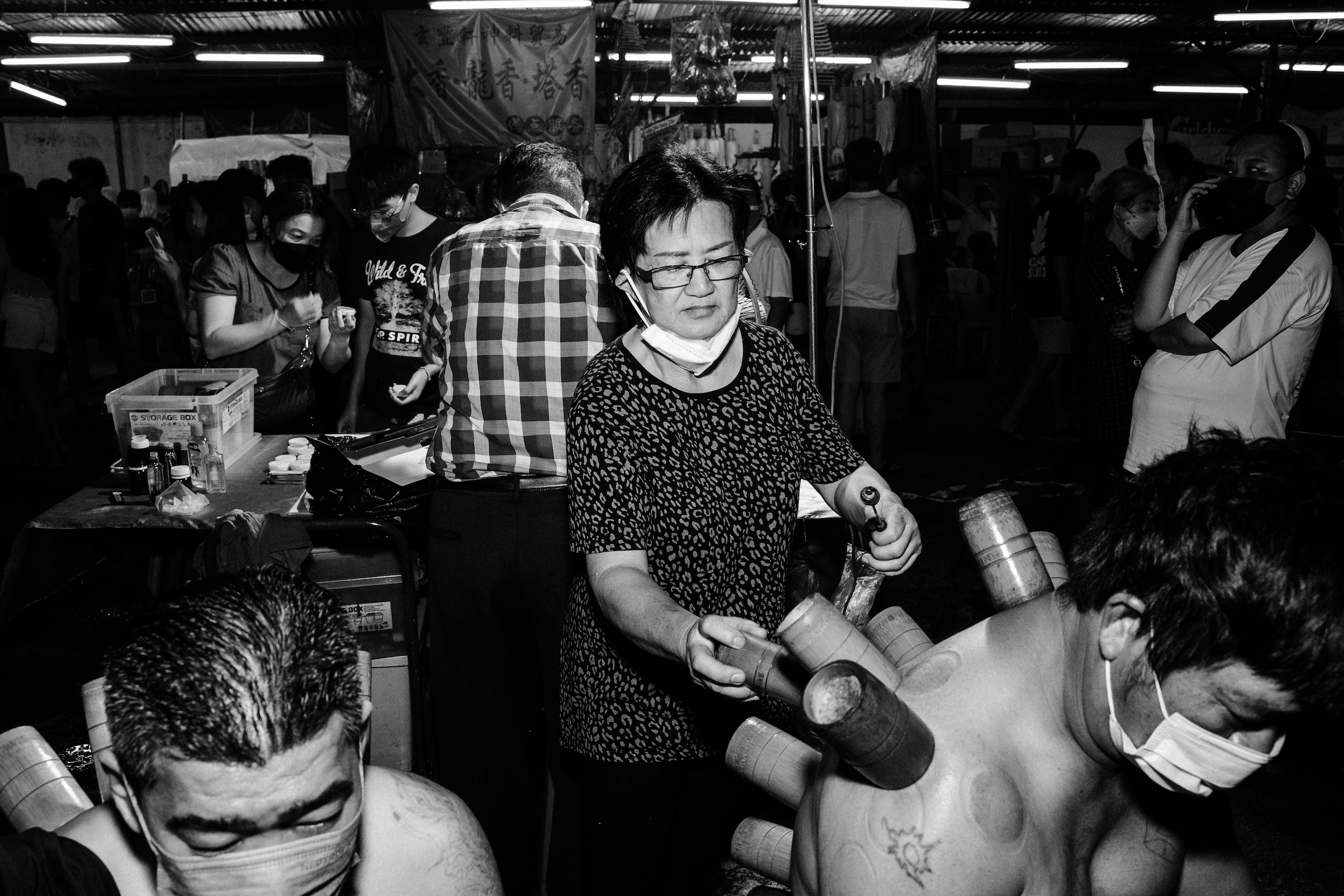
Speaking of, how did you go about finding the photographers for Plaza?
It is literally just research. We’re lucky enough to be working in the region a lot. I do have a lot of creatives, meaning street artists, illustrators, graffiti writers, photographers, people working in development literally around the region from China down to Papua. So it’s not too difficult to just hammer people on Instagram or email them.
If there’s one region in the world that’s got a lot of photographers in Southeast Asia. So it’s actually more of a case of discerning who’s relevant and not. It’s very important to actually give an idea of Southeast Asia through the prism of people from Southeast Asia.
Obviously, there’s a few expats but the lion’s share of it is essentially very hyper-local people.
Are there any specific photographers that stand out to you? Why?
There’s a guy called Edmond Leong in Malaysia. I think he’s fantastic, he’s like 19 or 20, a fantastic young photographer. I got that energy of wanting to do work, got a whole community of photographers around. I think he’s done some wonderful work.
There is a girl in Indonesia, in Sulawesi, Aziziah [Diah]. She does some great work, just really honest, real work. It kind of touches into development. She’s done a lot of the land grab stuff in Sulawesi, which you probably know about from Phnom Penh. She stands out.
Yeah, there are so many good and talented photographers. We’re just trying to get a good cross-section. There’s a Thai girl called Pokchat Worasub and she’s very much an artist like a super, super artist.
So, it was just trying to marry the world of super high art and maybe reportage to some degree, and try to create a platform where both can exist in the same place.
Are there any specific themes that have come up in the photographs?
The first issue is very much an overview of Southeast Asia. You know, you’ve got urban life – just a little bit of how people live, essentially. It’s street photography from the lens of photographers who live there.
Things that will come up again, urban life, housing, etc., these things are there in the visuals for you to take out yourself. We’re not putting heavy amounts of text in here. I feel that the book should exist in the world of photography, if that makes sense.
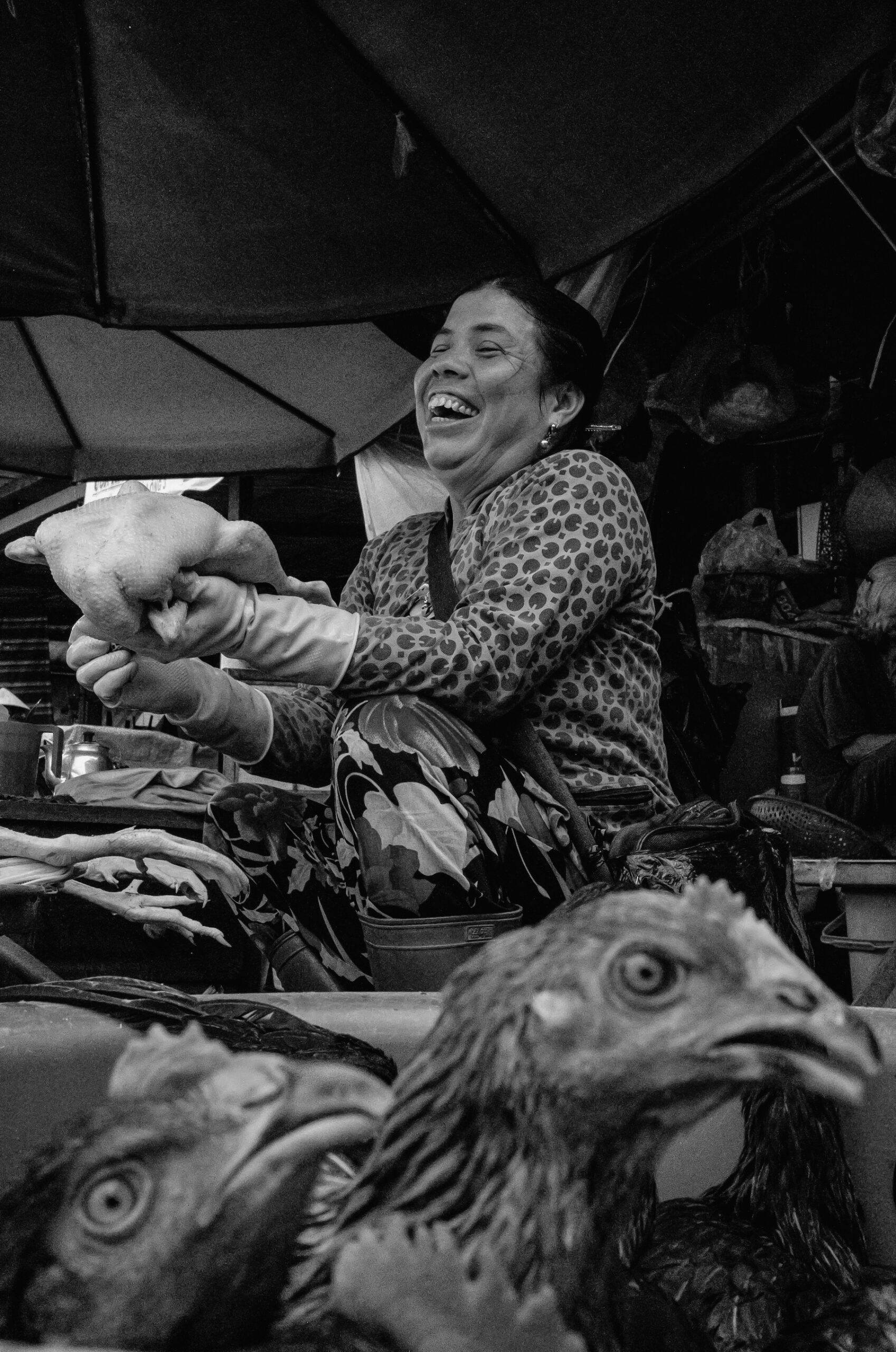
How else do you think this space has changed in the past couple of years or maybe since Covid, or even further back? Has it always been difficult to publish or is that a new thing?
I think actually it’s changed a lot. There is an element of things that feel slightly more conservative these days than really they were 10, 15 years ago, but there were good, great shops that just don’t really exist around the region.
You’ve got social media, you’ve got TikTok, so many dynamic ways of engaging the audience. It’s not just emailing the shop and they’re gonna buy some stuff. And that’s super, super, super frustrating.
I think in some respects you have to hardcore engage with social media in Southeast Asia, but then it doesn’t always translate to more cerebral stuff, if that makes sense. It’s quite hard to translate a compelling picture. I mean, it works with the photographer, but not so much in a sales kind of way, or a marketing way, for a title.
Do you think it will change?
I think it will change. I do think because of socials and more people doing interesting stuff, it will change. But who knows when and how.
In short, I think it was easier, and it’s a lot more difficult now.
Will the next issue have the same photographers, or will it be a whole new round? What about the subsequent ones after that, are they all going to be different every time?
What might happen is that a key bunch kind of stay with us, that we work with here and there. We already have some interesting people who aren’t in this one lined up for the next one. You want to basically hit 70% new people or 30% of people who worked in the last one, I think just to keep it fresh. I do think what we might do is like start going for a specific theme on the next one.
The first one is just basically a good solid street photography kind of vibe. I think the next one, we might push for something more stylised. Just push the bow out even more in terms of our layout and start seeing what works for the audience and getting feedback until we hit what we think Plaza is and that’s it.
The first issue of Plaza should be out in July, with availability by the end of the year in parts of Southeast Asia plus the U.S. and Europe, and can be purchased through the Soi Books website.
Over 100 dead bodies remain unclaimed after Indian rail disaster
BALASORE, India: Indian authorities made fervent appeals to families on Tuesday (Jun 6) to help identify over 100 unclaimed bodies kept in hospitals and mortuaries after 275 people were killed in the country’s deadliest rail crash in over two decades. The disaster struck on Friday, when a passenger train hitContinue Reading

